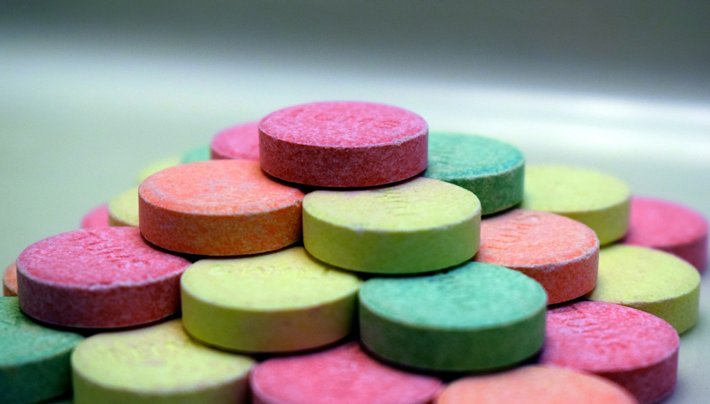What is MDMA?

MDMA is an illegal drug that acts as both a stimulant and psychedelic, producing an energizing effect, as well as distortions in time and perception and enhanced enjoyment from tactile experiences.
MDMA can affect the brain by altering the activity of chemical messengers, or neuro-transmitters, which enable nerve cells in the brain to communicate with one another. Research in animals has shown that MDMA in moderate to high doses can be toxic to nerve cells that contain serotonin and can cause long-lasting damage to them. Furthermore, MDMA raises body temperature. On rare but largely unpredictable occasions, this has led to severe medical consequences, including death. Also, MDMA causes the release of another neurotransmitter, norepinephrine, which is likely the cause of the increase in heart rate and blood pressure that often accompanies MDMA use.
MDMA users may encounter problems similar to those experienced by amphetamine and cocaine users, including addiction. MDMA damages brain serotonin neurons. Serotonin is thought to play a role in regulating mood, memory, sleep, and appetite. Research indicates heavy MDMA may cause persistent memory problems in humans; however, a 2011 study has reported limited cognitive decline in users of MDMA.
Psychological effects can include confusion, depression, sleep problems, anxiety, and paranoia, sometimes lasting for weeks after taking the drug. Physical effects can include muscle tension, involuntary teeth-clenching, nausea, blurred vision, faintness, and chills or sweating. Increases in heart rate and blood pressure are a special risk for people with circulatory or heart disease.
Also, there is evidence that people who develop a rash that looks like acne after using MDMA may be risking severe side effects, including liver damage, if they continue to use the drug. Almost 60 percent of people who use Ecstasy report withdrawal symptoms, including fatigue, loss of appetite, depressed feelings, and trouble concentrating.
MDMA Risks
MDMA-related fatalities at raves have been reported. The stimulant effects of the drug, which enable the user to dance for extended periods, combined with the hot, crowded conditions usually found at raves can lead to dehydration, hyperthermia (dangerous increase in body temperature), and heart or kidney failure.
Other drugs chemically similar to Ecstasy, such as MDA (methylenedioxyamphetamine, the parent drug of Ecstasy) and PMA (paramethoxyamphetamine, associated with fatalities in the U.S. and Australia) are sometimes sold as Ecstasy. These drugs can be neurotoxic or create additional health risks to the user.
Additionally, the illicit sale of Ecstasy makes it prone to being “cut” with other illicit and potentially toxic or deadly chemicals. Ecstasy tablets may contain other substances in addition to MDMA, such as ephedrine (a stimulant); dextromethorphan (a cough suppressant that has PCP-like effects at high doses); ketamine (an anesthetic used mostly by veterinarians that also has PCP-like effects); heroin; liquid LSD; caffeine; cocaine; and methamphetamine. While the combination of Ecstasy with one or more of these drugs may be inherently dangerous, users might also combine them with substances such as marijuana and alcohol, putting themselves at further physical risk.


